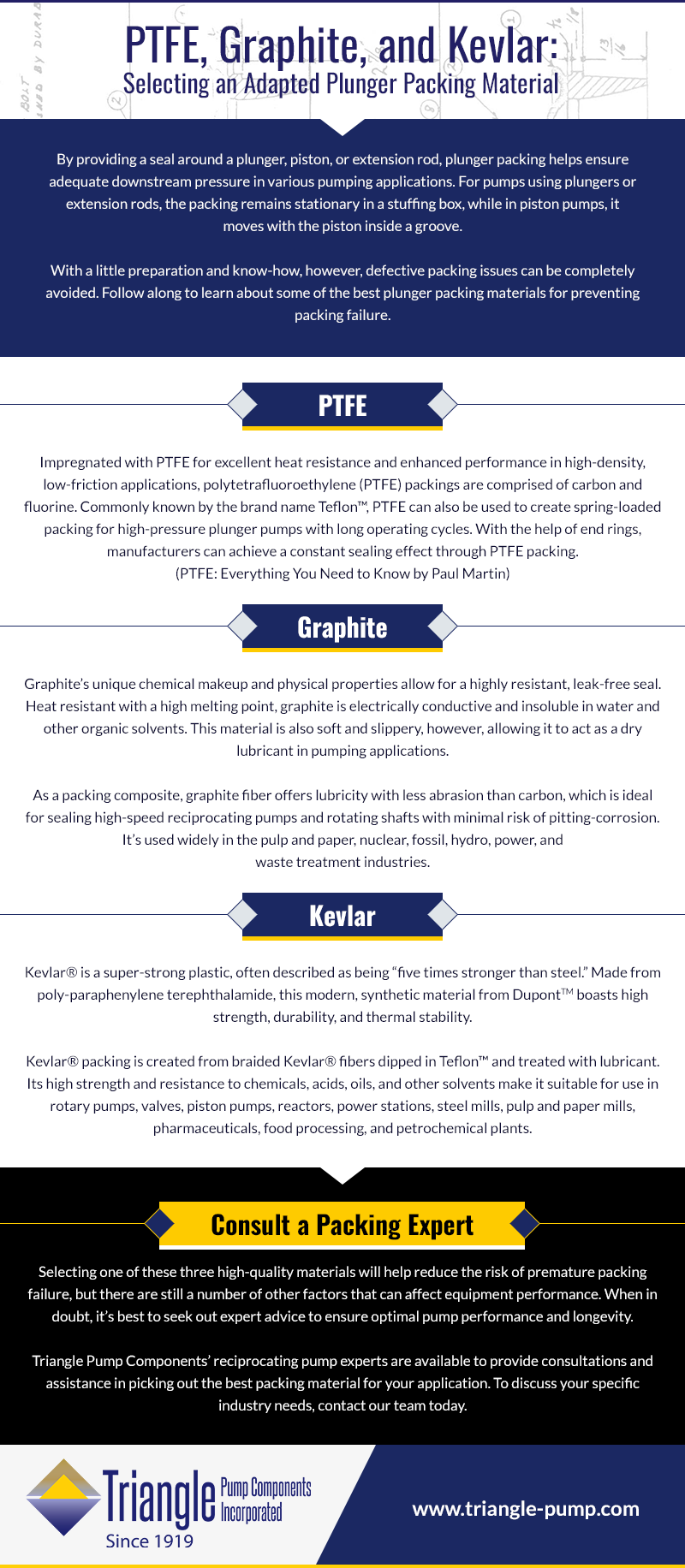By providing a seal around a plunger, piston, or extension rod, plunger packing helps ensure adequate downstream pressure in various pumping applications. For pumps using plungers or extension rods, the packing remains stationary in a stuffing box, while in piston pumps, it moves with the piston inside a groove.
Unfortunately, most users eventually experience packing problems throughout their equipment lifetime, the main causes of which include extrusion, excessive friction, product or chemical attack, and abrasion. Defective packing, a secondary cause of these premature failures, is most often caused by either dimensional inadequacy or material composition deficiencies.
With a little preparation and know-how, however, defective packing issues can be completely avoided. Follow along to learn about some of the best plunger packing materials for preventing packing failure.
PTFE
Impregnated with PTFE for excellent heat resistance and enhanced performance in high-density, low-friction applications, polytetrafluoroethylene (PTFE) packings are comprised of carbon and fluorine. Commonly known by the brand name Teflon™, PTFE can also be used to create spring-loaded packing for high-pressure plunger pumps with long operating cycles. With the help of end rings, manufacturers can achieve a constant sealing effect through PTFE packing. (PTFE: Everything You Need to Know by Paul Martin)
Graphite
Graphite’s unique chemical makeup and physical properties allow for a highly resistant, leak-free seal. Heat resistant with a high melting point, graphite is electrically conductive and insoluble in water and other organic solvents. This material is also soft and slippery, however, allowing it to act as a dry lubricant in pumping applications.
As a packing composite, graphite fiber offers lubricity with less abrasion than carbon, which is ideal for sealing high-speed reciprocating pumps and rotating shafts with minimal risk of pitting-corrosion. It’s used widely in the pulp and paper, nuclear, fossil, hydro, power, and waste treatment industries.
Kevlar
Kevlar® is a super-strong plastic, often described as being “five times stronger than steel.” Made from poly-paraphenylene terephthalamide, this modern, synthetic material from Dupont™ boasts high strength, durability, and thermal stability.
Kevlar® packing is created from braided Kevlar® fibers dipped in Teflon™ and treated with lubricant. Its high strength and resistance to chemicals, acids, oils, and other solvents make it suitable for use in rotary pumps, valves, piston pumps, reactors, power stations, steel mills, pulp and paper mills, pharmaceuticals, food processing, and petrochemical plants.

Consult a Packing Expert
Selecting one of these three high-quality materials will help reduce the risk of premature packing failure, but there are still a number of other factors that can affect equipment performance. When in doubt, it’s best to seek out expert advice to ensure optimal pump performance and longevity.
Triangle Pump Components’ reciprocating pump experts are available to provide consultations and assistance in picking out the best packing material for your application. To discuss your specific industry needs, contact our team today.